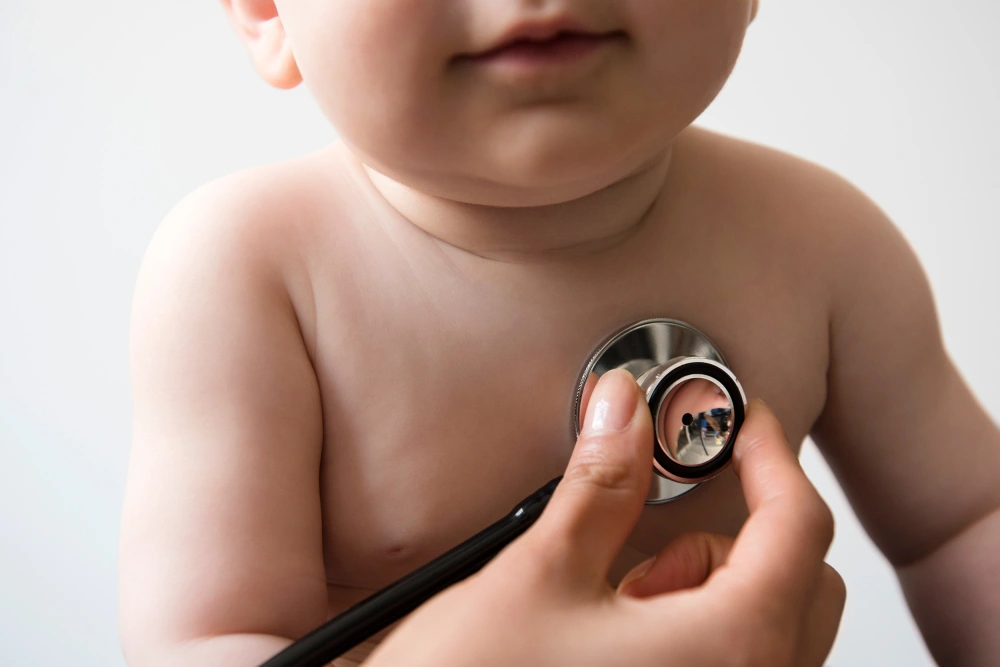It’s a tragedy with few answers: Sudden infant death syndrome is the leading cause of death among babies from 1 month to 1 year old in the U.S.
Affected infants generally appear healthy but die suddenly, often in their sleep, with no obvious explanation. The Centers for Disease Control and Prevention attributed nearly 1,400 infant deaths in 2020 to SIDS, as the condition is known — the latest available data.
Currently, there’s no way to tell whether a baby might develop SIDS. But a new study has found that a particular group of chemicals called metabolites, which are tested for as part of routine newborn screenings, could identify babies with an elevated risk.
The “heel stick” test is mandated for infants in all 50 states and involves collecting a blood sample from a baby’s heel shortly after birth. That is used to screen for genetic disorders like sickle cell disease via certain markers in the blood.
The new study, published Monday in the journal JAMA Pediatrics, found that a group of eight metabolites included on the newborn screening panel was associated with SIDS. The metabolites are produced as the body breaks down nutrients.
The results indicated that infants with particular levels of those metabolites in their blood had a higher risk of SIDS — up to 14 times the odds compared to infants with the lowest risk.
Laura Jelliffe-Pawlowski, one of the study’s authors and a professor at New York University, said the research suggests that “babies who die unexpectedly are more likely to be metabolically different than those who don’t.”
Jelliffe-Pawlowski conducted the research while working as a professor of epidemiology and biostatistics at the University of California, San Francisco.
“We found that, at birth, we’re able to stratify kids as being very low risk — not zero risk, but very low risk — versus relatively very high risk for SIDS,” she said, adding that the screenings could indicate which babies need closer monitoring.
The findings are based on data from infants born in California from 2005 to 2011. The researchers compared the results of newborn screening tests for 354 infants who died of SIDS with 1,416 infants who did not. They ran the data through a model to control for external factors that could influence a baby’s risk, like the mother’s age, race or health status.
Jelliffe-Pawlowski said the research indicates that babies with an increased risk of SIDS may have some difficulty using and breaking down sugars or fats.
“Maybe we’re looking at some food sensitivities,” she said, but added that much more research is needed into the link between SIDS risk and metabolism. “It’s impossible to tell at this point.”
Even if further studies confirm that metabolic abnormalities are a risk factor, the challenge is what to do if they appear on a baby’s newborn screening results. For the most part, SIDS is hard to prevent.
“I worry a little bit about what this could do to stress and anxiety, if we say, ‘Hey, my kid’s at an increased odds for this, but there’s nothing I can do,’” said Dr. Stephanie Napolitano, a neonatology physician at Nationwide Children’s Hospital who was not involved in the new study.
Parents can lower the risk of SIDS by placing babies on their backs when they sleep and making sure their room isn’t too hot, but those interventions aren’t necessarily sufficient.
Dr. Joanna Parga-Belinkie, a neonatologist at Children’s Hospital of Philadelphia who also wasn’t involved, similarly questioned whether newborn screenings can provide enough answers.
“It’s likely that newborn screening itself is not really going to be sensitive or specific enough to be a great screen for SIDS,” she said, adding that, at best, it might tip off doctors that they need to do additional testing for babies with an abnormal metabolic profile.
Researchers generally think that SIDS results from a combination of factors, not just one. It is more likely to occur when infants are at a critical stage of development, making them more vulnerable, and when they’re exposed to a stressor, like sleeping face down, which can lower oxygen and raise carbon dioxide in their blood. Many experts also think that some underlying abnormality, such as a genetic, metabolic or neurological issue, is likely at play.
The new study “doesn’t knock out the possibility that there’s an underlying genetic phenomenon,” said Dr. Debra Weese-Mayer, chief of the pediatric autonomic medicine division at Lurie Children’s Hospital of Chicago, who wasn’t involved in the research.
“But every baby that’s born isn’t going to get a deep-dive genetic evaluation — they do get newborn screenings,” she added.
Some recent research on SIDS has pointed to other risk factors, including serotonin, which helps regulate heart rate and breathing. A study last year suggested that an altered brain receptor involved in the serotonin system could prevent some infants from gasping for air when they don’t get enough oxygen during sleep.
A 2022 study, meanwhile, suggested that babies who died of SIDS had lower levels of a chemical messenger involved in the autonomic nervous system, which regulates involuntary processes like blood pressure and breathing.
Experts said it’s too soon to say whether the metabolic differences detected in the new study are related to the neurological differences identified in previous research.
“Your body is so interconnected. Your autonomic nervous system obviously has an impact and plays a role in your metabolism,” Napolitano said. “Figuring out how all of those pieces fit together is still the question.”




